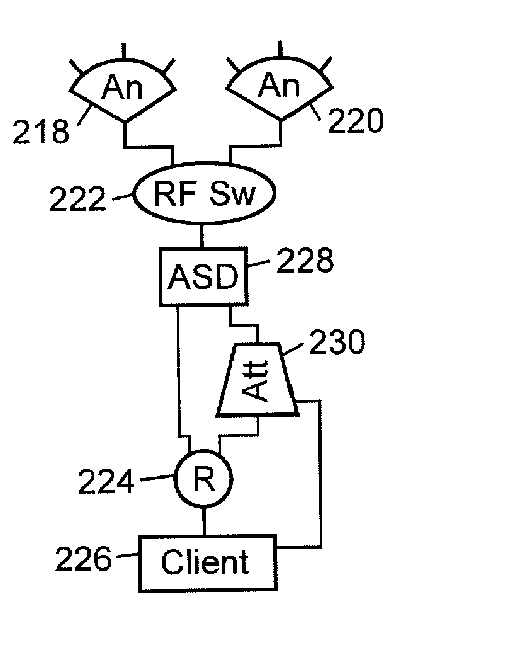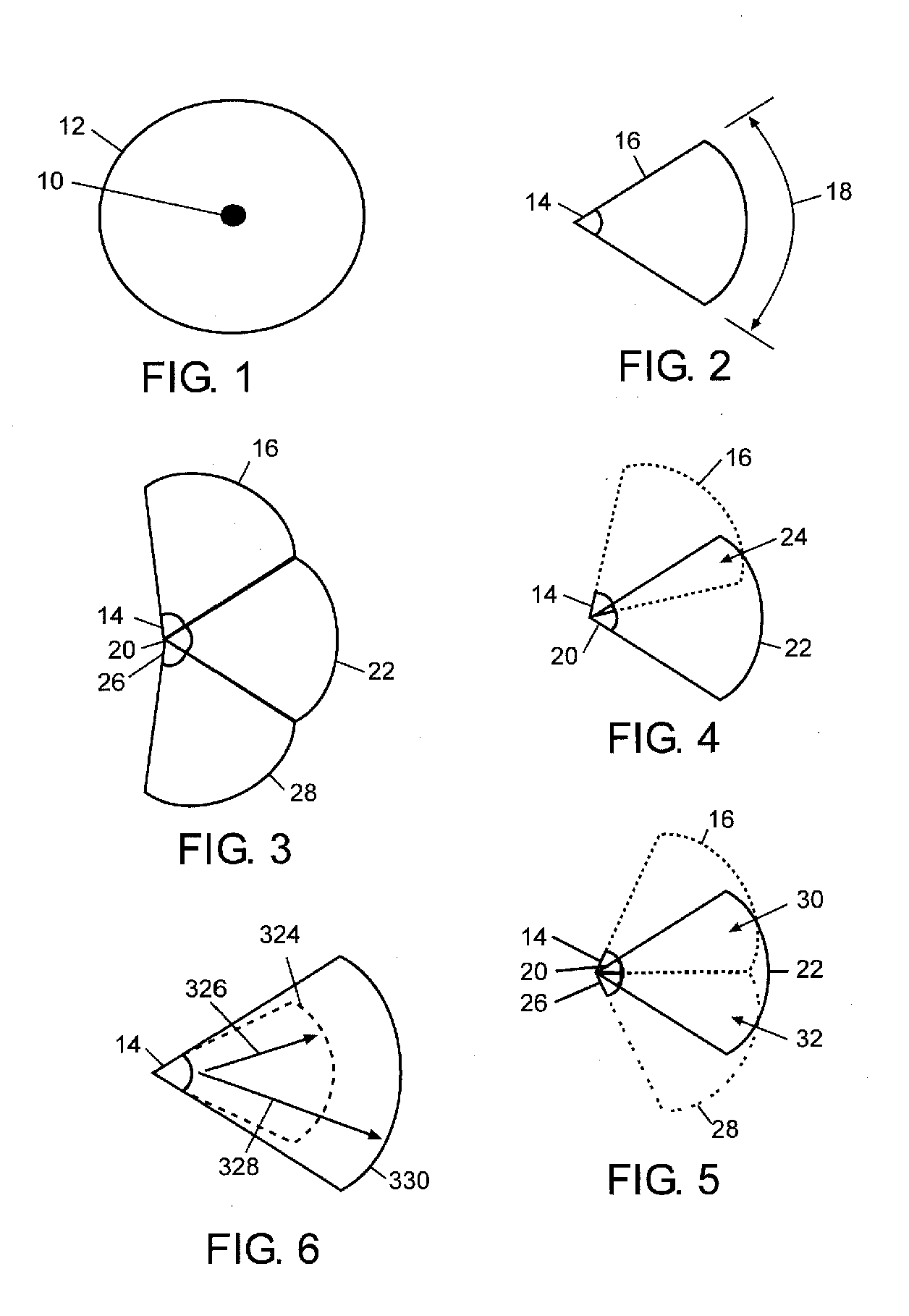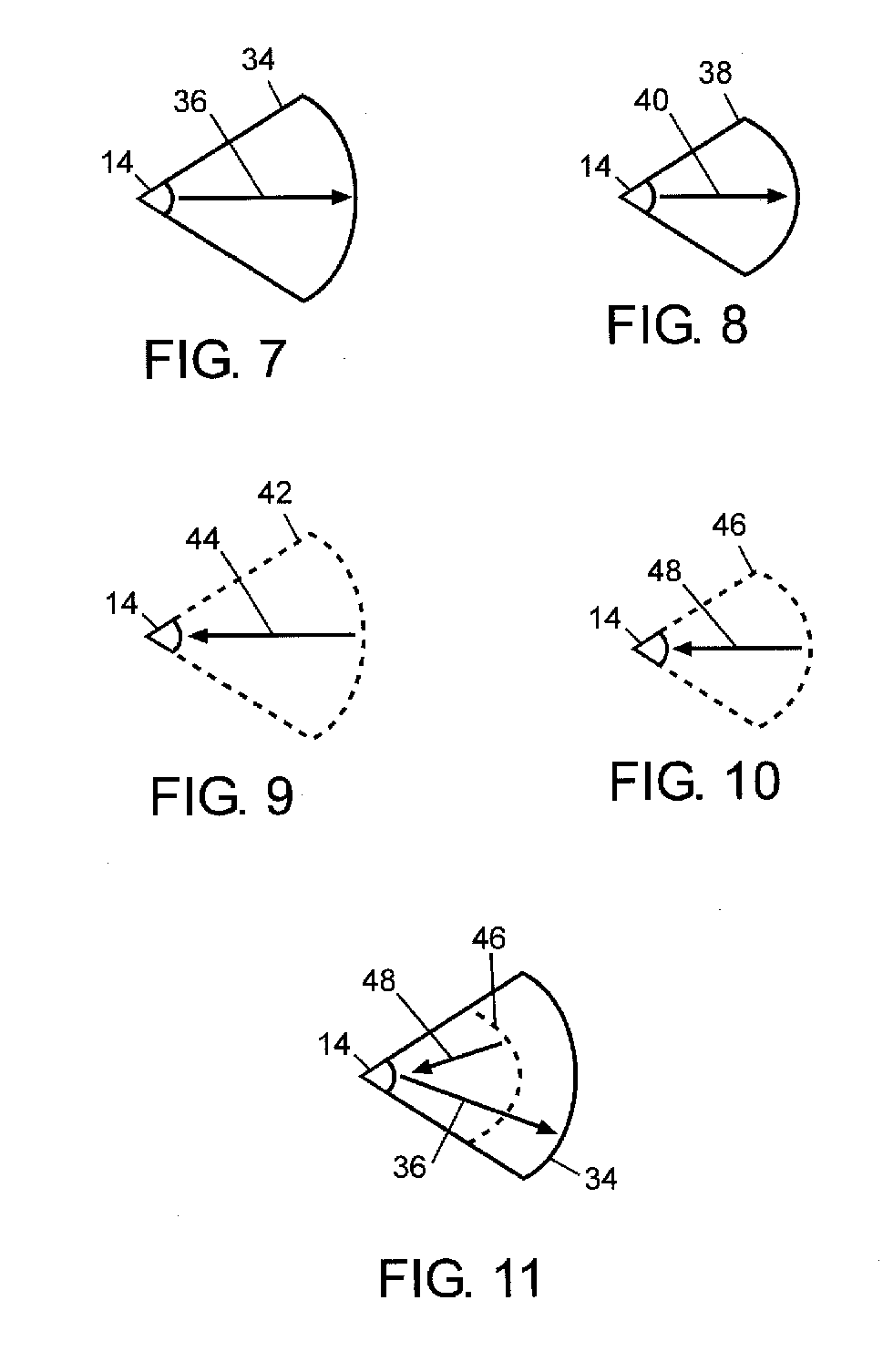Method and apparatus for high throughput multiple radio sectorized wireless cell
a wireless cell, multi-radio sector technology, applied in the field of wireless communication, can solve the problems of limited current generation of wireless access points and devices, and achieve the effect of minimizing interference with foreign wireless systems and increasing throughpu
- Summary
- Abstract
- Description
- Claims
- Application Information
AI Technical Summary
Benefits of technology
Problems solved by technology
Method used
Image
Examples
first embodiment
[0107] Other potential variations on the enhanced antenna system first embodiment may include using the antenna that receives the strongest receive signal exclusively for reception and the antenna that transmits the strongest transmit signal exclusively for transmission without requiring the transmit and receive antennas to be the same. The antennas may also be arranged to be non-overlapping, but also non-adjacent.
[0108] A second embodiment of an enhanced antenna system uses multiple directional antennas arranged such that the antenna physical sectors overlap. Unlike the first embodiment of an enhanced antenna system, multiple antennas in the second embodiment may be simultaneously active, which may increase the desirability of the second embodiment for a wireless cell. Exemplary patterns for overlapping physical sectors are shown in FIG. 4, FIG. 5, FIG. 14, FIG. 17, and FIG. 20. The exemplary antennas and hardware shown in FIG. 22, FIG. 25, FIG. 28, or FIG. 29 may be adapted to pro...
second embodiment
[0112] The hardware shown in FIG. 29 does not represent a current off-the-shelf-radio because the radio through an RF switch attaches to more than two antennas. However, the antenna physical sectors may be arranged to provide the overlapping wireless cell coverage pattern of FIG. 34, thereby meeting the enhanced antenna system second embodiment feature of overlapping sectors.
[0113] Another possible antenna physical sector arrangement includes physical sectors which overlap by about 100% thereby forming virtual sectors substantially equal in size to a physical sector. An example of such a scheme may exist where at least two antenna physical sectors are assigned to position 62 in FIG. 13, at least two additional antenna physical sectors are assigned to position 64, and at least an additional two antennas to position 66. The physical sectors of the antennas in each position 62, 64, or 66 may completely overlap and form virtual sectors the size of the individual antenna physical sector....
third embodiment
[0114] an enhanced antenna system is similar to the second embodiment in that it uses multiple directional antennas arranged such that the antenna physical sectors overlap; however, the third embodiment may be different in that, for example, an attenuator is placed between each antenna and its corresponding RF switch as shown in FIG. 24 and FIG. 27. The third embodiment has the advantage of virtual sectors covered by multiple antennas, along with the ability to attenuate the effects of unwanted receive signals with the attenuators. The level of attenuation may be changed between transmission and reception; thereby, allowing the wireless cell to attenuate unwanted receive signals while still transmitting at substantially full strength. The attenuator and methods of attenuation are described in more detail below. The arrangement of the antenna physical sectors of the enhanced antenna system third embodiment may be similar to the overlapping arrangements described in the second embodim...
PUM
 Login to View More
Login to View More Abstract
Description
Claims
Application Information
 Login to View More
Login to View More - R&D
- Intellectual Property
- Life Sciences
- Materials
- Tech Scout
- Unparalleled Data Quality
- Higher Quality Content
- 60% Fewer Hallucinations
Browse by: Latest US Patents, China's latest patents, Technical Efficacy Thesaurus, Application Domain, Technology Topic, Popular Technical Reports.
© 2025 PatSnap. All rights reserved.Legal|Privacy policy|Modern Slavery Act Transparency Statement|Sitemap|About US| Contact US: help@patsnap.com



